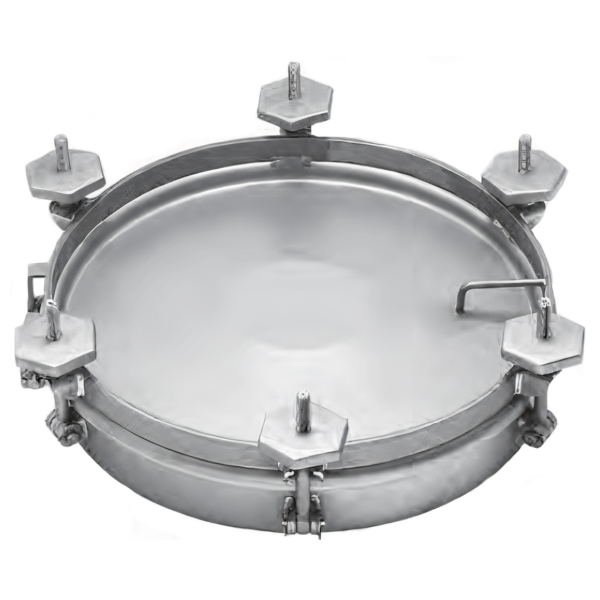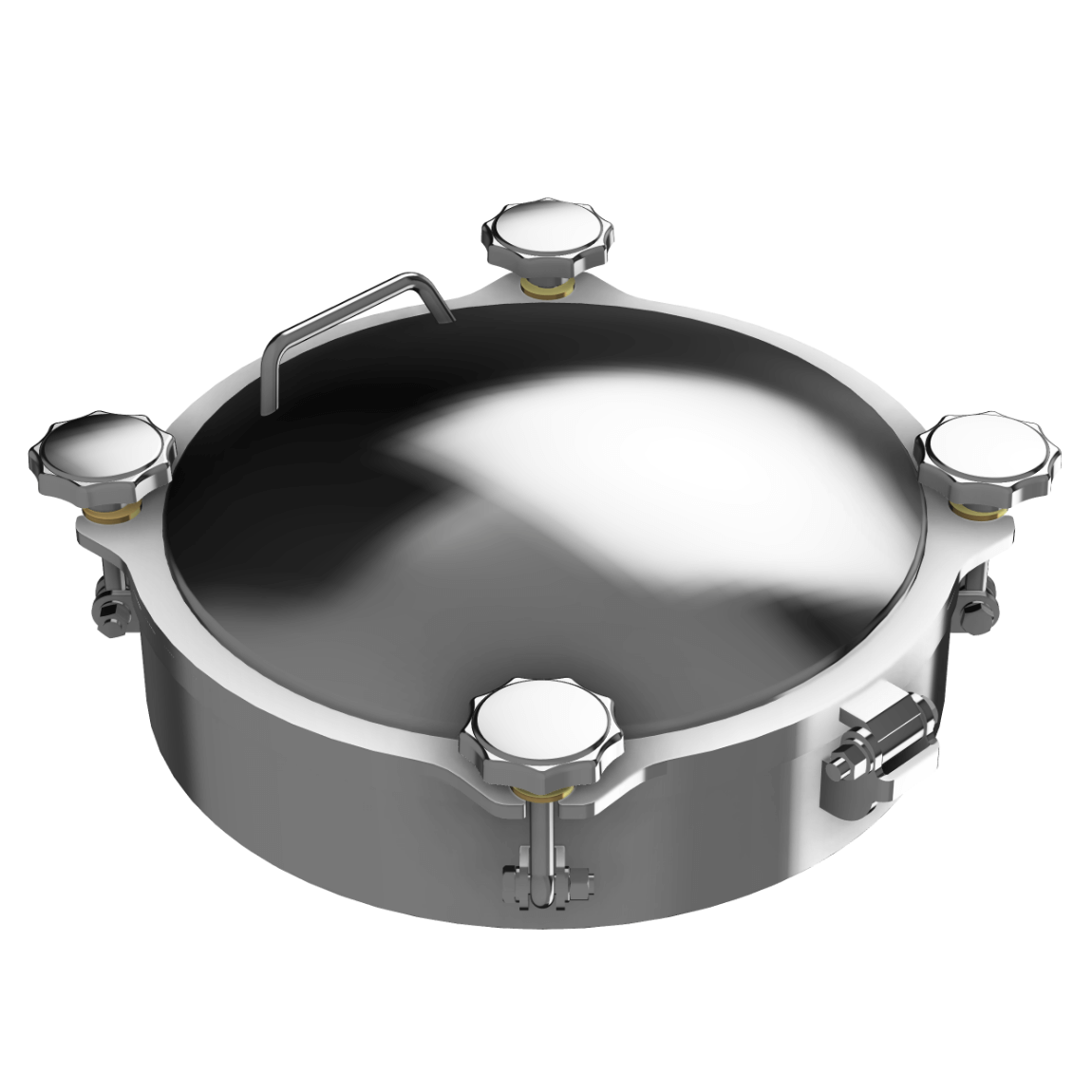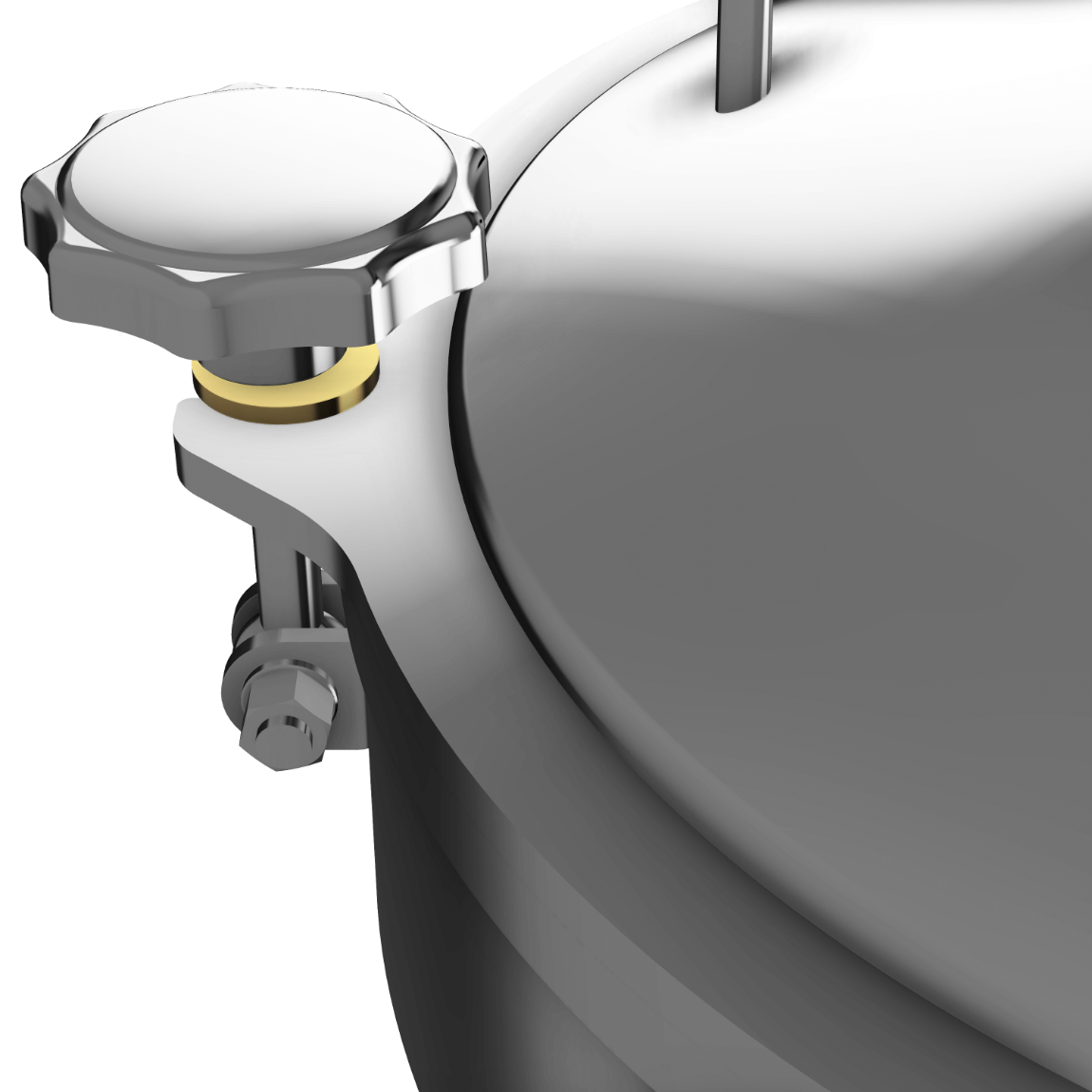
Round manway

Round manway

Pressure manways are a category of manways with increased resistance to the conditions inside the tank where the manway is installed. A pressure manway is a structure of any shape (round, rectangular or oval) resistant to pressure of at least 0.5 bar.
Pressure manways are inspection elements for tanks and equipment with working conditions considerably exceeding atmospheric pressure. A large number of models in this group are also suitable for operation in vacuum conditions. This type of manways will therefore be installed, for instance:
Pressure manways, as a category focusing on the pressure parameter, include products of various shapes. So among the pressure manways, we find round manways, oval manways and rectangular manways.
The shape of the manway for pressure applications plays a key role. The pressure manways with the highest technical specifications are:
Round pressure manways are typically characterized by more handwheels installed around the perimeter of the manway compared to their non-pressure counterparts. In addition, round pressure manways are accompanied by a thicker wall of the lid and manway frame. The combination of these features results in increased overall pressure resistance of the design.
In the case of oval manways, factors affecting increased pressure resistance include frame wall thickness, lid thickness, and locking system design. In addition, oval manways frequently have a lid that opens inwards into the tank. As a result, the manway lid is naturally pressed around the perimeter of the frame by a force acting on it from the inside.
Rectangular pressure manway lids, due to their technical characteristics, are usually used for less demanding pressure applications. The pressure resistance of rectangular manways does not usually exceed 2.5 bar.
In addition to the shape, wall thickness, locking method, and number of clamps, the size of the manway also has a significant impact on the overall pressure resistance.
A common relationship is that the smaller the manway clearance, the greater its pressure resistance. However, the dynamics of this relationship vary with regard to the technical specifications of individual models, which is clearly seen in round and oval manways.
The dominant dimensions among round pressure manways are the following diameters:

The pressure resistance for these dimensions varies considerably depending on the model and its design and is usually in the range of 1.0 – 12.0 bar.
There are some deviations from this size range, as there are also small round pressure manways (DN50, DN100 or DN150), as well as extremely large designs with diameters up to DN600 or DN900, which also have increased pressure resistance.
Oval pressure manways do not provide as wide a dimensional range as round manways. The average oval pressure manway has a longer side with a dimension between 400-500 mm (common dimensions are: 440x308 mm, 440x340 mm, 400x490 mm). However, models with slightly higher clearance are also available, going beyond the aforementioned range (for example: 550x450 mm, 540x410 mm).
Manways with slightly smaller dimensions and a large frame wall thickness are characterised by a higher value of the pressure resistance parameter (for example, oval manways with dimensions of 400x490 mm and a wall thickness of 12 mm can have a pressure resistance of even 12 bar).
Stainless steel pressure manways, as components installed in tanks where the pressure exceeds the 0.5 bar (50 kPa) limit value, are usually subject to PED pressure certification. The detailed parameters, as well as the technical requirements that pressure equipment must meet, are contained in the Pressure Equipment Directive P.E.D. 2014/68/EU.
Complete PED certification includes:
It is worth noting that for some models only an abridged copy of the PED certification is supplied, including the relevant declaration from the certifying body (e.g. TÜV), material certifications and the engineering design of the manway. Exact requirements for the scope of documentation should be formulated in each case at the stage of technical arrangements.
We use cookies